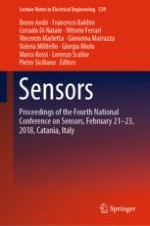2019 | Book
Sensors
Proceedings of the Fourth National Conference on Sensors, February 21-23, 2018, Catania, Italy
Editors: Prof. Bruno Andò, Dr. Francesco Baldini, Prof. Corrado Di Natale, Prof. Vittorio Ferrari, Dr. Vincenzo Marletta, Prof. Giovanna Marrazza, Prof. Valeria Militello, Prof. Giorgia Miolo, Prof. Marco Rossi, Dr. Lorenzo Scalise, Pietro Siciliano
Publisher: Springer International Publishing
Book Series : Lecture Notes in Electrical Engineering
